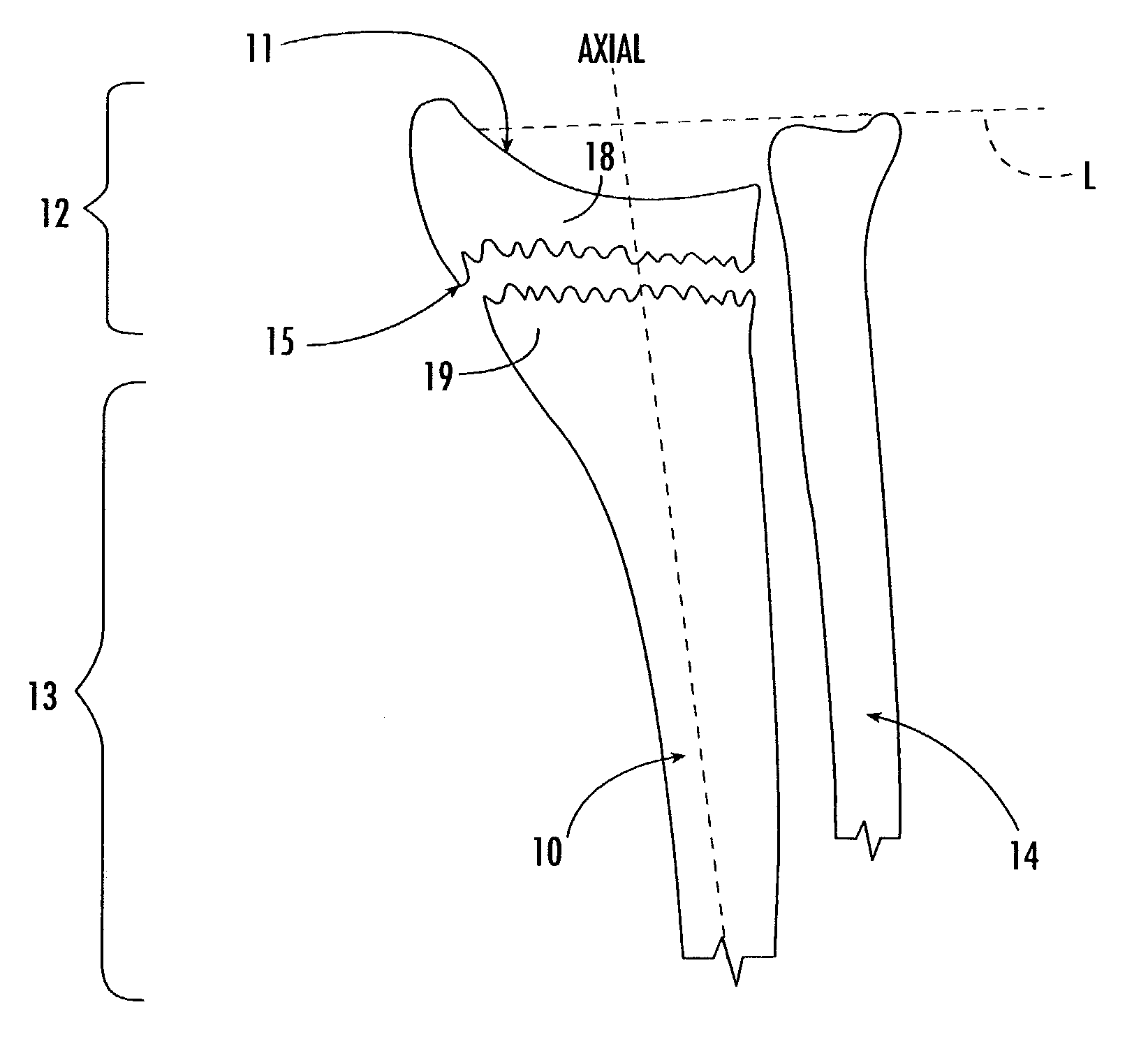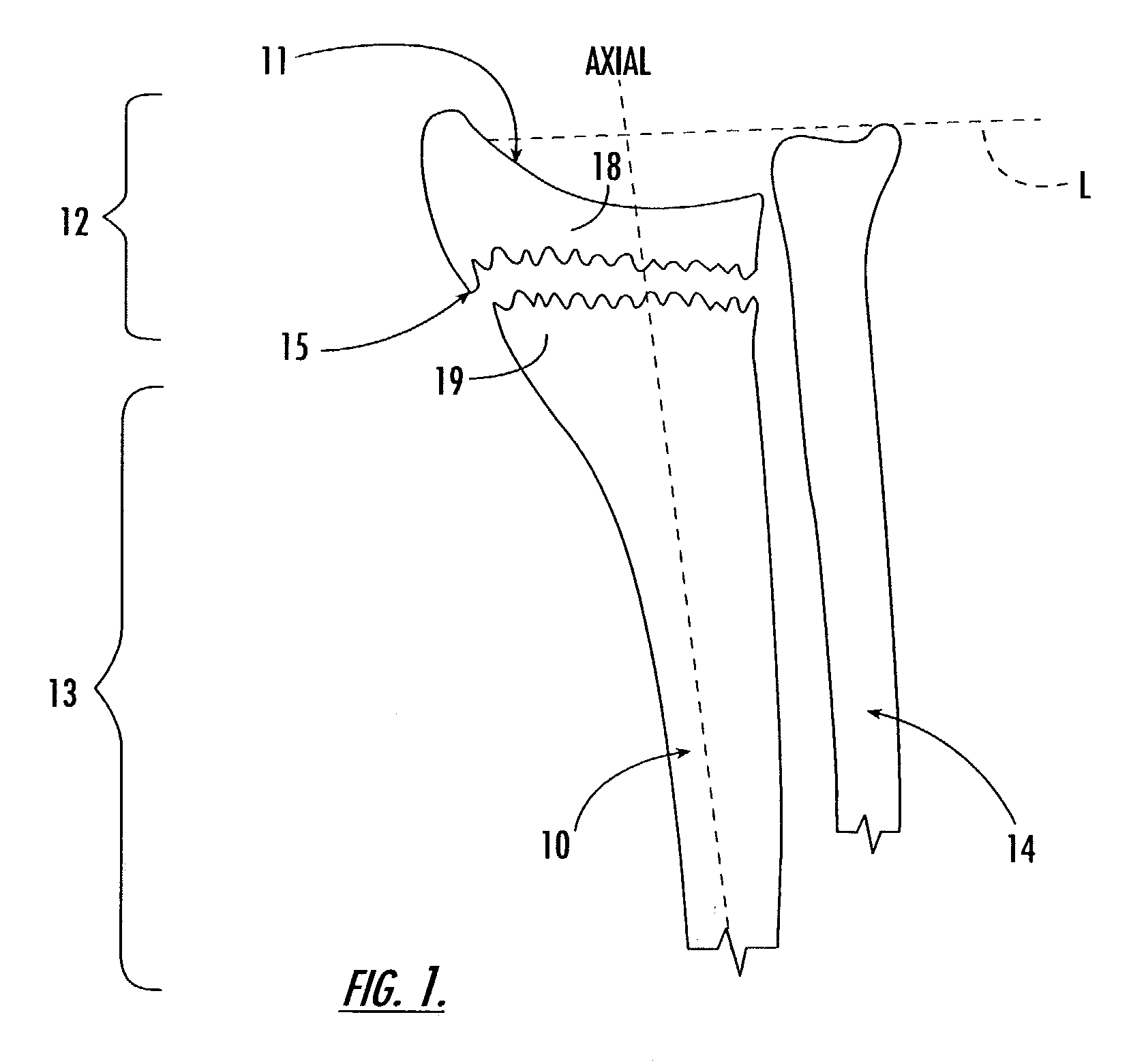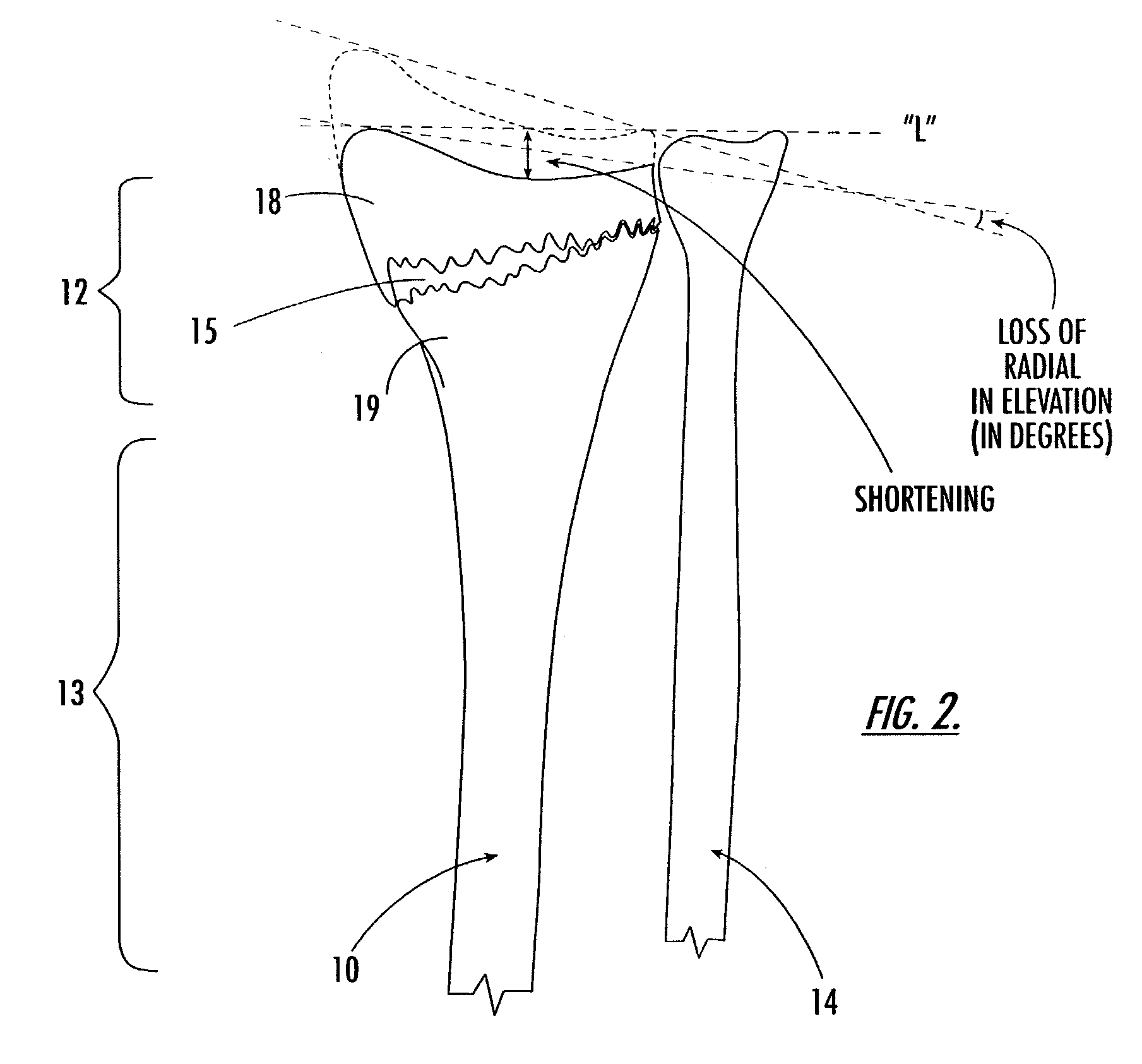Intramedullary interlocking fixation device for the distal radius
a technology of interlocking fixation and distal radius, which is applied in the field of devices and methods for treating distal radius fractures, can solve the problems of difficult treatment of distal radius fractures, more susceptible bones to injury, and most common distal radius fractures in the elderly segment, so as to stabilize and treat distal radius fractures of patients, and inhibit the amount of collapse or loss in skeletal length
- Summary
- Abstract
- Description
- Claims
- Application Information
AI Technical Summary
Benefits of technology
Problems solved by technology
Method used
Image
Examples
Embodiment Construction
[0040]The present invention will now be described more fully hereinafter with reference to the accompanying figures, in which preferred embodiments of the invention are shown. This invention may, however, be embodied in many different forms and should not be construed as limited to the embodiments set forth herein. Like numbers refer to like elements throughout. In the figures, certain layers, regions, or components may be exaggerated for clarity.
[0041]As shown in FIG. 3A, in a preferred embodiment, the intramedullary fixation device 25 includes an elongated axially extending rod 26 with a distal portion 27 and a proximal portion 28. The device 25 also includes a distal fixation member 30 and at least one proximal fixation member 35 (shown as two proximal fixation members 35a, 35b). The rod 26 includes a head 26h at the distal end portion 27 of the rod 26. A distal aperture 30a is formed into the head 26h of the distal portion such that it extends across the width of the rod 26.
[004...
PUM
| Property | Measurement | Unit |
|---|---|---|
| width | aaaaa | aaaaa |
| length | aaaaa | aaaaa |
| width | aaaaa | aaaaa |
Abstract
Description
Claims
Application Information
 Login to View More
Login to View More - R&D
- Intellectual Property
- Life Sciences
- Materials
- Tech Scout
- Unparalleled Data Quality
- Higher Quality Content
- 60% Fewer Hallucinations
Browse by: Latest US Patents, China's latest patents, Technical Efficacy Thesaurus, Application Domain, Technology Topic, Popular Technical Reports.
© 2025 PatSnap. All rights reserved.Legal|Privacy policy|Modern Slavery Act Transparency Statement|Sitemap|About US| Contact US: help@patsnap.com



